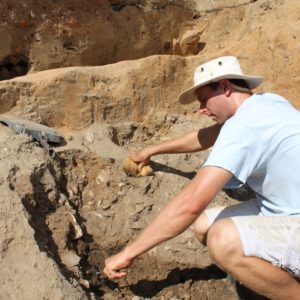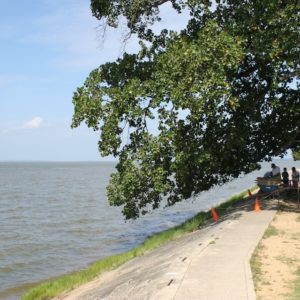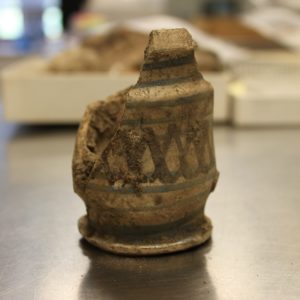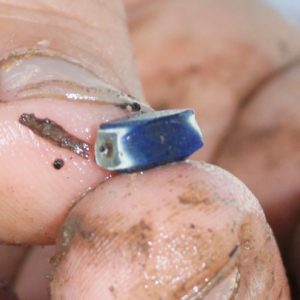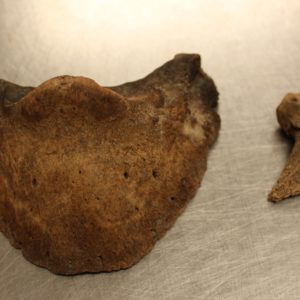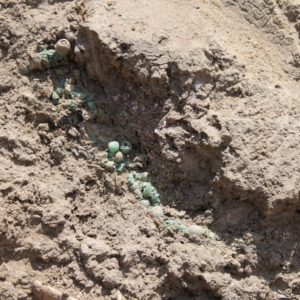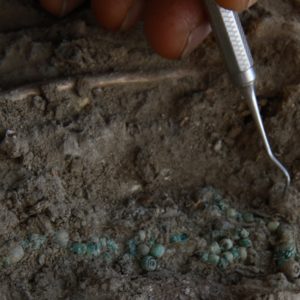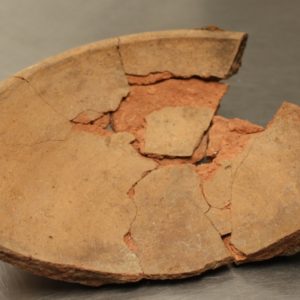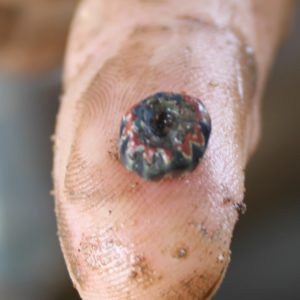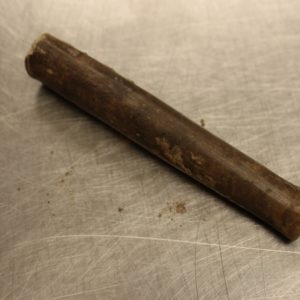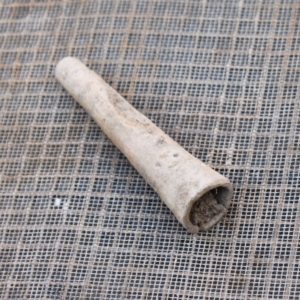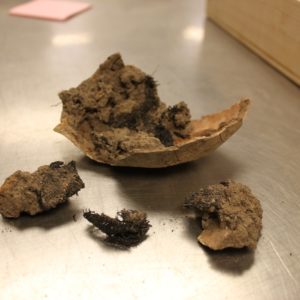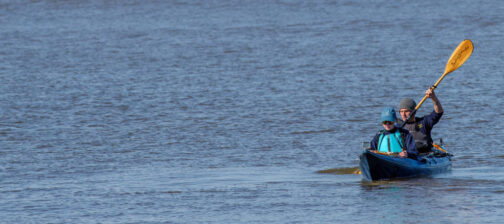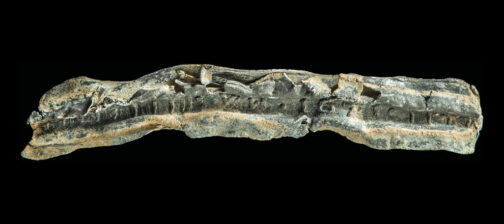Excavations have reached a depth of about 6 feet in a very early well at the center of James Fort. There has been no let-up for the Jamestown Rediscovery conservation team as hundreds of artifacts are discovered each day in the bucketfuls of dirt excavated from the well. Pipes, beads, animal bones, pottery, musket balls, oyster shells, and crab claws are among the artifacts found since last month’s update. Some sherds of pottery have been matched with pieces found in other early fort-period features, lending more evidence to the suggestion that this well is very early and probably the fort’s first.
In the oppressive heat of Virginia’s August sun, archaeologists are steadily working their way down into the depths of what is likely James Fort’s first well. Exciting for the fact that wells were used as trash pits once they outlived their usefulness, previously-discovered wells have proved to be treasure-troves of artifacts and this one is no different. What’s more, objects found below the water-line are often in extremely good condition due to their oxygen-starved environment. Wood, leather, and organic material survives, and metal objects survive almost free of rust unlike similar items above. The excavations are currently several feet above the water table and are focused on an area covered by a large pile of oyster shells. Interspersed with the pile are several blue crab claws. This pile was likely dumped in all at once after being moved from another area of the fort, as the shells are present in such large numbers in a relatively shallow amount of space. A large number of tobacco pipes have been found amidst the oyster shells and the surrounding area, many of which bear the diamond mark of Jamestown’s pipe maker Robert Cotton. Pipes made by Virginia Indians have turned up in the well recently also.
Beads continue to be found in the well in large numbers and range from the Venetian-made Nueva Cadiz-type to locally-made shell and bone beads. A large pile of green beads discovered recently in the well may have been strung together as a necklace, though in the early stages of the beads’ excavation no material binding them together has been found. Several sherds of a London-made distilling dish used for industrial processes were found in the well. The curatorial staff is busy mending the pieces back together. More horse bones have been found, including a charred horse hoof. A claw from what is probably a black bear was also recently discovered. A turtle shell excavated from the well is filled with pieces of burned fabric. Some of the pottery pieces found in the well come from the same objects as other pottery sherds found during excavations of the past several years. The pieces found elsewhere in the fort come from features known to date to the earliest years of the fort’s existence. This evidence suggests that the well is also an early feature.
The well will become more narrow as the archaeologists progress further down and excavate the shaft itself. This should mean that it will take less time to excavate subsequent layers.
related images
- Archaeologist Danny Schmidt excavates a corner of the well filled with oyster shells
- Water-screening for artifacts in the shade to beat the summer heat
- An apothecary jar found in the well
- A Nueva Cadiz bead
- A charred horse hoof and a claw probably belonging to a black bear
- A number of green beads that may have been part of a necklace
- Green beads found together, likely from a necklace
- A London-made distilling dish used for industrial processes
- A chevron bead
- A crab claw
- A Virginia Indian pipe
- A Virginia Indian pipe
- A turtle shell filled with burned fabric



